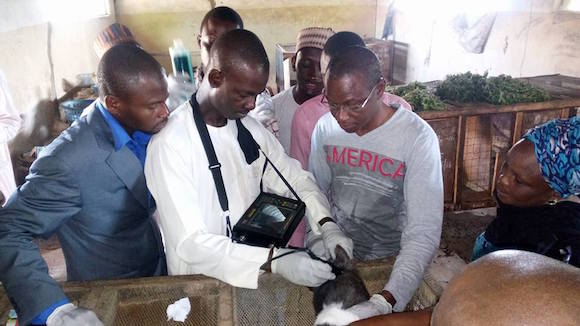Livestock Mechanization, Reproduction should not be an exemption

As agricultural mechanization gains daily popularity amongst Nigerian farmers and key agricultural stakeholders, what comes readily to mind at the instance of mechanized farming – as some prefer to call it – are tractors, plough, harrow, planters, automated feed conveyors/drinkers, automated feed millers to mention just a few.
Crop production – one of the two components of agriculture in Nigeria – has been greatly favored as regards the use of modern technology in implementing its operations. As at today, there is virtually no activity in the crop production value chain that is tedious to achieve with available modern technology; pre-planting, planting, post planting, harvesting, processing and storage have been catered for. No doubt one’s mind swings swiftly toward crop production at the mention of the subject, “mechanized farming in Nigeria”.
On the other hand, animal production – the co-component of agriculture in Nigeria – apparently suffers more at the instance of mechanization. Vast majority of livestock farmers/producers still employ crude methods and techniques during production. Does this imply that animal production is yet to be mechanized in Nigeria? Emphatically No!
We are all witnesses to the gigantic infrastructural automation projects by some prominent key players in the Nigeria livestock industry. Livestock mechanization in Nigeria has conveniently seen to ease of feeding, water supply, identification, medication, vaccination, slaughtering, evisceration, processing and packaging. Though this is worth our applause, we could have given a resounding applause if only livestock reproduction has been fully mechanized in Nigeria. But how?
Your guess must be as good as mine, Artificial Insemination? Of course, Artificial Insemination!
Artificial Insemination nonetheless, is today a toothless and clawless lion, living in the glory of successes recorded beyond the borders of Nigeria, which explains the less than 5% overall success rate of A.I in Nigeria in the last one decade. Livestock reproduction is far beyond Artificial Insemination, it includes effective estrous synchronization, accurate ovulation detection, semen evaluation and pregnancy detection. Today one can even scan to know the number of foetuses expected, the ratio of expected male to female, age of foetus (es) and the estimated date of delivery. In summary, livestock reproduction can be segmented into pre-insemination, insemination and post-insemination. It is unwise however, to isolate insemination, or prioritize insemination over other processes in the reproduction chain.
In Nigeria, A.I has been in practice since 18th century but its effect has not been significantly felt in the livestock industry. In 2015, a state government in the Northern region of Nigeria embarked on a livestock multiplication project; numerous cattle, sheep and goat were inseminated artificially with less than 15% success rate. I heard recently how a PhD in Animal Physiology recorded a zero result during a pig multiplication project in a state in Southwest Nigeria.
Yet the problem is not A.I in itself, there are expertise all around us. Our reproductive veterinarians and animal health scientists readily possess this skill. But then how can one ascertain the viability of the sperm cells in the semen at the point of insemination? Are the sperm cells motile? What is the percentage concentration to suggest how many female animals should be inseminated? Was the female animal at the peak of ovulation? Can one confirm the success of the insemination shortly after insemination? Was the animal actually pregnant? Should the process be repeated?
The above questions can only be answered with the use of modern animal reproductive technological solutions.
One would wish all these were abstract or theories but then I have been privileged to use some of these technologies here in Nigeria on animals in Nigeria; pig, goat etc. These devices/solutions are here with us and very affordable to farmers. Government and livestock agencies should assist the awareness at all level for easy localization of these animal reproductive solutions for rapid multiplication of our indigenous livestock production.
Until household and large scale farmers can breed and improve livestock production with efficacy can we wholly proclaim the mechanization of animal production in Nigeria.
Related Posts
Comments
By accepting you will be accessing a service provided by a third-party external to https://archive.ypard.net/

